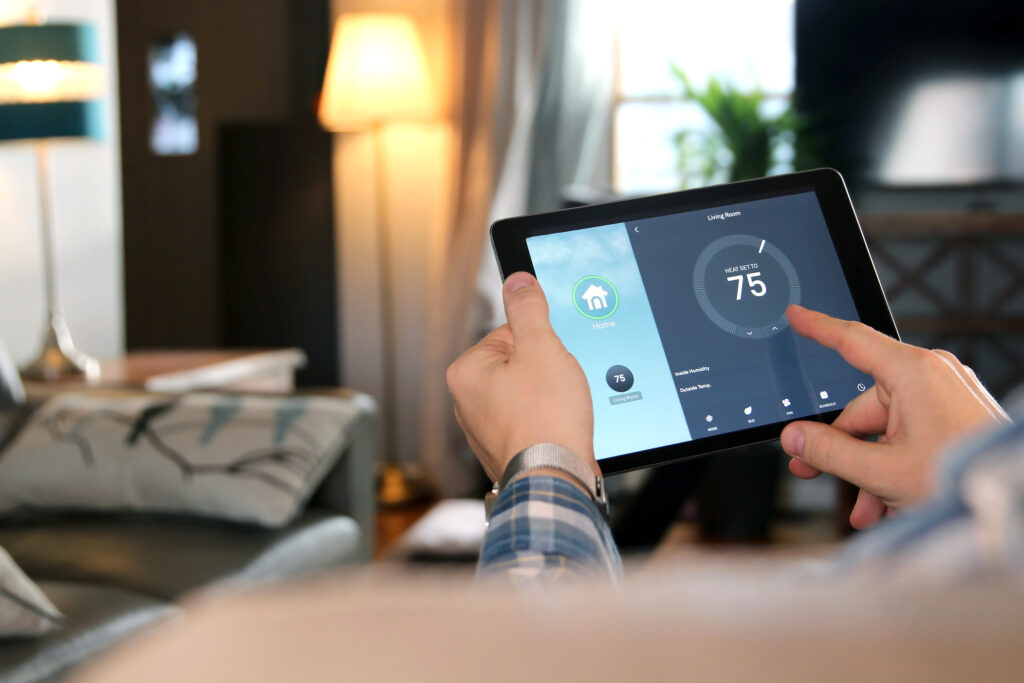Smart homes implement advanced technologies such as sensors, automation, and communication to improve energy efficiency, sustainability, and living comfort. The main role of a smart home is to provide demand side flexibility to residents, the best and safest living experience, including optimized care and good air quality, as well as the opportunity to save their consumption.
Smart home energy management systems (SHEMS) combine information from smart devices, sensors, and external signals (such as electricity prices or weather forecasts). These systems help to save energy, reduce costs, and support a more sustainable energy system.
In energy management systems, heating, lighting, and other electronic devices can be controlled remotely using an internet connection with a smart device or even with voice commands. There are many options on the market, from individual internet-connected LED lights and thermostats to comprehensive solutions. However, it is very important to ensure sufficient data security and encryption of your internet connection.

What is a smart home energy management system (SHEMS)?
SHEMS is a centralized control hub, that monitors home’s energy use in real-time. It optimizes the energy use of devices to improve efficiency and connects to devices, such as smart thermostats, appliances, EV chargers, solar panels, or batteries.
The goal of the system is to make the home more energy efficient and smart by tailoring energy use to human habits and needs, as well as keeping them informed. The system also aims to align the home's energy consumption to the conditions of the power grid, to reduce the strain and benefit of more affordable hours.
Technologies
- Smart hubs: Devices like home energy management controllers or platforms that integrate and control all your smart appliances.
- Consumption monitoring devices: Track energy consumption for the whole house or specific appliances.
- Smart thermostats: Automate heating and cooling based on usage patterns or external signals like weather.
- Solar integration and battery management: Manage self-produced energy, deciding when to use, store, or sell it back to the grid.
- IoT (Internet of things) Integration of smart plugs, lights, and other devices to ensure seamless communication.
To what kinds of homes?
Smart home energy management systems are most effective in homes with:
- Modern HVAC systems: Systems like heat pumps, underfloor heating, or zoned heating systems benefit from precise energy control.
- Connected devices: The more smart devices there are in the home, the more effectively the system can optimize energy use.
- Renewable energy generators: If you have solar panels or a home battery system, SHEMS can maximize their value.
Dependency and intervention
SHEMS are designed to run in the background with minimal user intervention. However, you may notice the following:
- Automated adjustments: Lights may dim, thermostats may change, and appliances may turn on or off at unusual times (usually based on price or network signals).
- Dependence on connectivity: Most systems require a stable internet connection for real-time data and updates.
- Dependence on electricity: Järjestelmä tarjoaa mukavuutta ja säästöjä, mutta on riippuvainen sähköstä. Tämä voi olla ongelma esimerkiksi sähkökatkosten tai järjestelmäongelmien aikana.
Risks and challenges
- Information security: SHEMS collects and stores data about your energy habits, which could be vulnerable to hacking if not properly secured. Look for systems with strong encryption and security protocols, and always change default passwords
- Privacy: The data collected might be shared with third parties, such as utility companies or app developers. Read privacy policies carefully.
- Complexity: Some users may find the setup or learning curve intimidating. Choosing a user-friendly system with good support can mitigate this.
